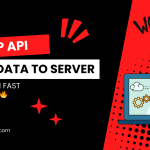The Best Fluffy Pancakes recipe you will fall in love with. Full of tips and tricks to help you make the best pancakes.
The Role of Edge Computing in IoT Systems
Internet of Things (IoT) systems have revolutionized the way we interact with technology, enabling interconnected devices to communicate and share data seamlessly. However, the sheer volume of data generated by IoT devices poses a significant challenge when it comes to processing and analyzing this data in real time.
Challenges of Centralized Data Processing
Traditionally, IoT systems relied on centralized cloud servers for data processing and analysis. While this approach works well for certain applications, it can introduce latency and bandwidth issues, especially when dealing with large amounts of data or time-sensitive operations.
Enter Edge Computing
Edge computing addresses these challenges by bringing data processing closer to the source of data generation, at the edge of the network. This distributed computing paradigm enables real-time data processing and analysis, reducing latency and bandwidth requirements.
Benefits of Edge Computing in IoT
One of the key advantages of edge computing in IoT systems is its ability to process data locally, without the need to send it to a centralized server. This not only reduces latency but also enhances data security and privacy by keeping sensitive information closer to its source.
Furthermore, edge computing allows for more efficient use of network resources by offloading processing tasks from the cloud to edge devices. This can result in cost savings and improved scalability for IoT deployments.
Real-Time Data Processing with Edge Computing
By harnessing the power of edge computing, IoT systems can analyze data in real time, enabling quicker decision-making and response to changing conditions. For example, in industrial IoT applications, edge computing can detect anomalies in sensor data and trigger immediate actions to prevent equipment failure or optimize performance.
Conclusion
Edge computing plays a crucial role in enabling real-time data processing and analysis in IoT systems. By bringing computation closer to the source of data generation, edge computing offers numerous benefits in terms of efficiency, scalability, and security. As the IoT ecosystem continues to evolve, the adoption of edge computing is expected to grow, driving innovation and enabling new use cases across various industries.




